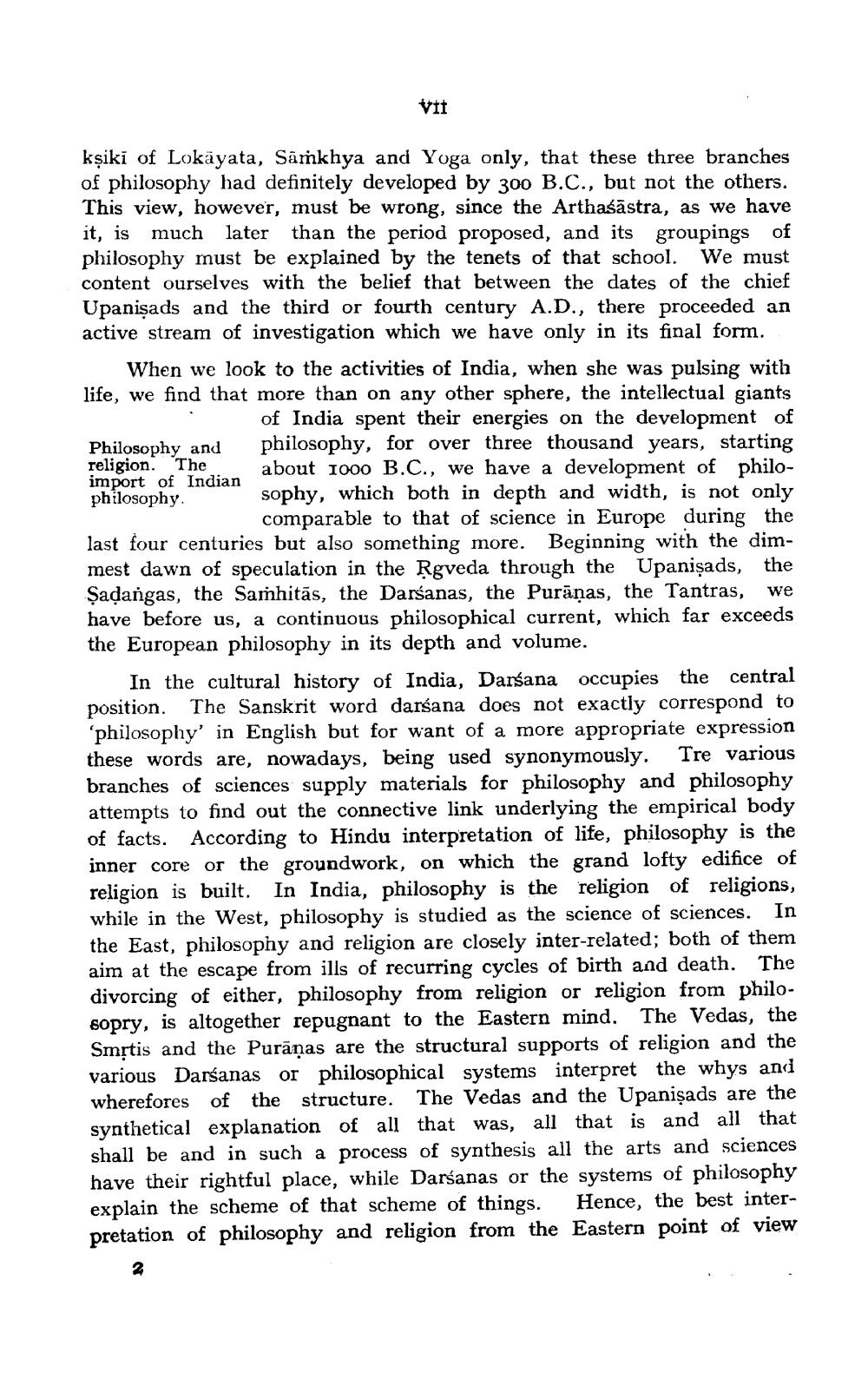________________
VII
kşiki of Lokayata, Samkhya and Yoga only, that these three branches of philosophy had definitely developed by 300 B.C., but not the others. This view, however, must be wrong, since the Arthaśastra, as we have it, is much later than the period proposed, and its groupings of philosophy must be explained by the tenets of that school. We must content ourselves with the belief that between the dates of the chief Upanisads and the third or fourth century A.D., there proceeded an active stream of investigation which we have only in its final form.
When we look to the activities of India, when she was pulsing with life, we find that more than on any other sphere, the intellectual giants of India spent their energies on the development of philosophy, for over three thousand years, starting about 1000 B.C., we have a development of philosophy, which both in depth and width, is not only comparable to that of science in Europe during the last four centuries but also something more. Beginning with the dimmest dawn of speculation in the Ṛgveda through the Upanisads, the Sadangas, the Samhitas, the Darśanas, the Puranas, the Tantras, we have before us, a continuous philosophical current, which far exceeds the European philosophy in its depth and volume.
Philosophy and religion. The import of Indian philosophy.
In
In the cultural history of India, Darśana occupies the central position. The Sanskrit word darśana does not exactly correspond to 'philosophy' in English but for want of a more appropriate expression these words are, nowadays, being used synonymously. Tre various branches of sciences supply materials for philosophy and philosophy attempts to find out the connective link underlying the empirical body of facts. According to Hindu interpretation of life, philosophy is the inner core or the groundwork, on which the grand lofty edifice of religion is built. In India, philosophy is the religion of religions, while in the West, philosophy is studied as the science of sciences. the East, philosophy and religion are closely inter-related; both of them aim at the escape from ills of recurring cycles of birth and death. The divorcing of either, philosophy from religion or religion from philosopry, is altogether repugnant to the Eastern mind. The Vedas, the Smṛtis and the Puranas are the structural supports of religion and the various Darśanas or philosophical systems interpret the whys and wherefores of the structure. The Vedas and the Upanisads are the synthetical explanation of all that was, all that is and all that shall be and in such a process of synthesis all the arts and sciences have their rightful place, while Darśanas or the systems of philosophy explain the scheme of that scheme of things. Hence, the best interpretation of philosophy and religion from the Eastern point of view
2




